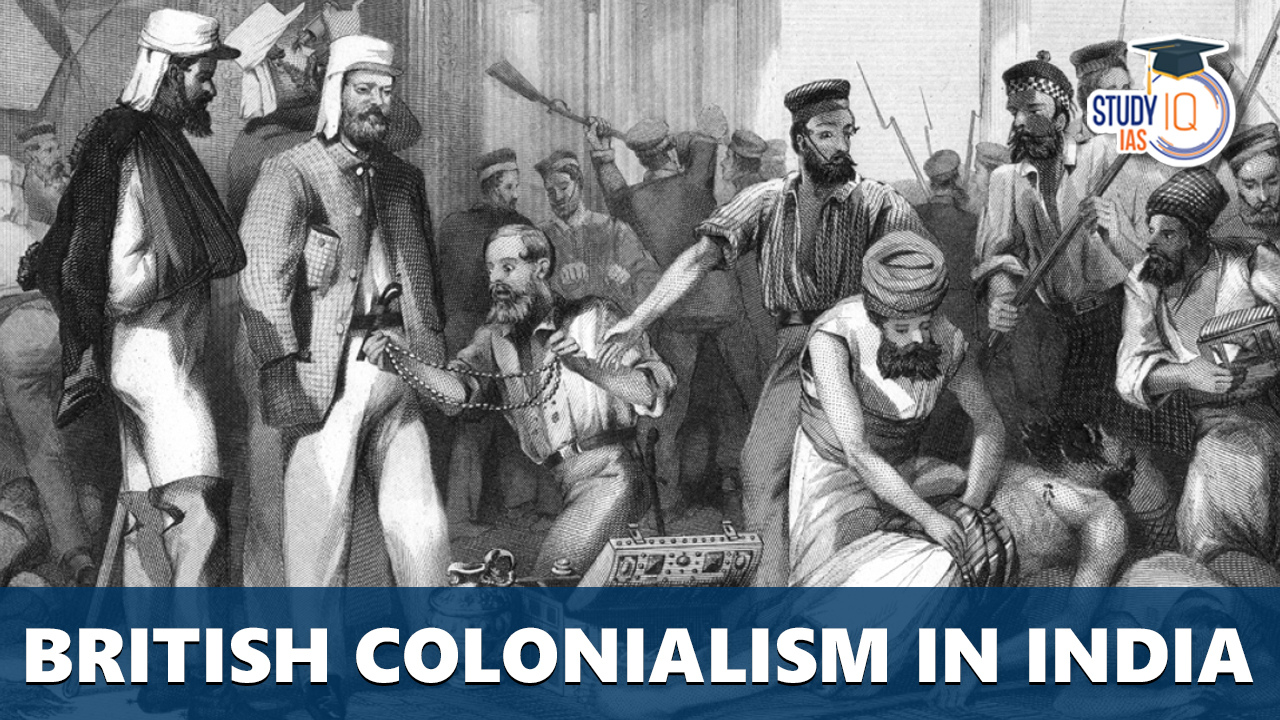Table of Contents
In India, the term “British Colonialism” refers to the British government’s control over its colonial territories. The term “colonialism” describes a situation in which a colonizing nation uses economic, military, and political tools to directly rule a conquered state. The period of direct British authority over India from 1858 to independence is known as British Colonialism in India.
British Colonialism in India
The fall of the Mughal Empire was one of India’s greatest historical setbacks.
- British traders have a long history of being among the greatest in the world.
- India’s strategic location was something that the British intended to use for trade. But the arrival of the Portuguese made it a failure.
- From 1526 until Aurangzeb’s death in 1707, the British enjoyed authority over the majority of India following the fall of the Mughal Empire.
- War broke out between the Maratha and Persian once the Mughals were overthrown. British colonialism in India was made possible by taking advantage of this circumstance.
Facts About British Colonialism in India
Below, we’ve covered some key information about British colonialism in India.
- The first Viceroy during British Colonialism in India was Charles Canning, where as the last Viceroy was Lord Louis Mountbatten.
- There were three capitals during British control in India: Shimla (summer capital) (1864–1947), New Delhi (1911–1911), and Calcutta (1858–1911).
- The East India Company’s first factory was founded in Masulipatnam in 1611.
- Cotton, silk, indigo, saltpeter, tea, and opium were among the commodities traded by the East India Company.
Beginning of British Colonialism in India
The goal of the British was to control the global commercial sector. But at that time, the Portuguese ruled the seas. The British and Dutch established their own private stock firm to compete with the Portuguese. But they soon found themselves at odds with one another.
- The British formed the East India Company in 1600 to conduct business after the Dutch were successful in the Indonesian archipelago.
- Following a peace treaty between the Dutch and the English, the Dutch were given control of the spice trade while the East India Company controlled the textile sector.
- The trade in textiles eventually surpassed that of spices. British companies were more profitable than Dutch ones. Fort St. George in Calcutta became the new home of the East India Company.
Positive Impacts of British Colonialism in India
British reign in India had a lot of good effects on India, including:
- Intercaste marriage was made lawful in India in 1872 thanks to a law that was passed. In 1856, the Widow Remarriage Act and the declaration of slavery as unlawful both took place.
- The practice of giving young infants as sacrifices was outlawed by Lord Hardinge.
- The establishment of railway connections in inland areas was one of the best aspects of British colonialism in India.
- In India, a brand-new legal and judicial system was implemented.
- The concepts of liberty, equality, and freedom were introduced to India with the establishment of British colonies there.
- There have been several new colleges and institutions that have improved the Indian educational system. Indian society benefited from the use of the English language and western concepts.
Negative Impacts of British Colonialism in India
Additionally, there were a lot of negative effects of British control in India. They are briefly mentioned below.
- Numerous craftspeople lost their work as a result of the decline in conventional means of subsistence.
- British citizens were granted free commerce through the Charter Act of 1813, but imports from India were subject to high taxes in Britain.
- The government implemented a permanent settlement mechanism in order to increase the rent.
- Numerous families were forced into poverty in India as a result of British colonialism.
- Indians were made to grow and sell commercial goods like coffee, cotton, opium, and other things under the Britishers’ command.
- There was a significant importation of clothing created by machines as a result of British colonialism in India. The Indian handcraft industries were under danger.
British Rule in India
In a commitment to her subjects, Queen Victoria pledged that the British government would support their development.
- The British administration implemented a policy that pitted Hindus and Muslims against one another in an effort to reduce the risks during their time in power in India.
- On behalf of India, the British declared war on Germany in 1914. There were roughly 1.5 million Indian soldiers in the British military. Unfortunately, this had no impact on how the British saw Indians.
- India made a substantial contribution to World War 2 during British colonialism in that country.
- By that point, Britain’s wartime economic losses had begun to have an impact. The Indian independence movement began at this period, as the British began to lose control of the country.
- With the adoption of the Indian Independence Act of 1947, British colonialism in India came to an end.
British Colonialism in India UPSC
The consequences of British dominance in India are still a contentious and complicated topic. While some Indians view it as a time of exploitation and oppression, others acknowledge the beneficial effects British rule had on Indian society and its infrastructure. There were some good improvements brought about by the British Empire in India, but the negative impacts were much more profound and had a lasting impact on the evolution of Indian society.


 UPSC CSE Interview Schedule 2025: Dates,...
UPSC CSE Interview Schedule 2025: Dates,...
 UPSC EPFO Cut Off 2025 (Expected): Categ...
UPSC EPFO Cut Off 2025 (Expected): Categ...
 UPSC EPFO Answer Key 2025 Out (Unofficia...
UPSC EPFO Answer Key 2025 Out (Unofficia...

























